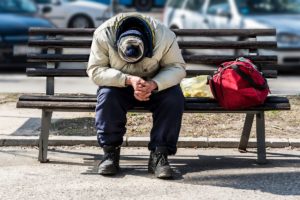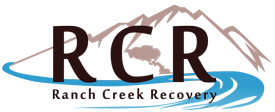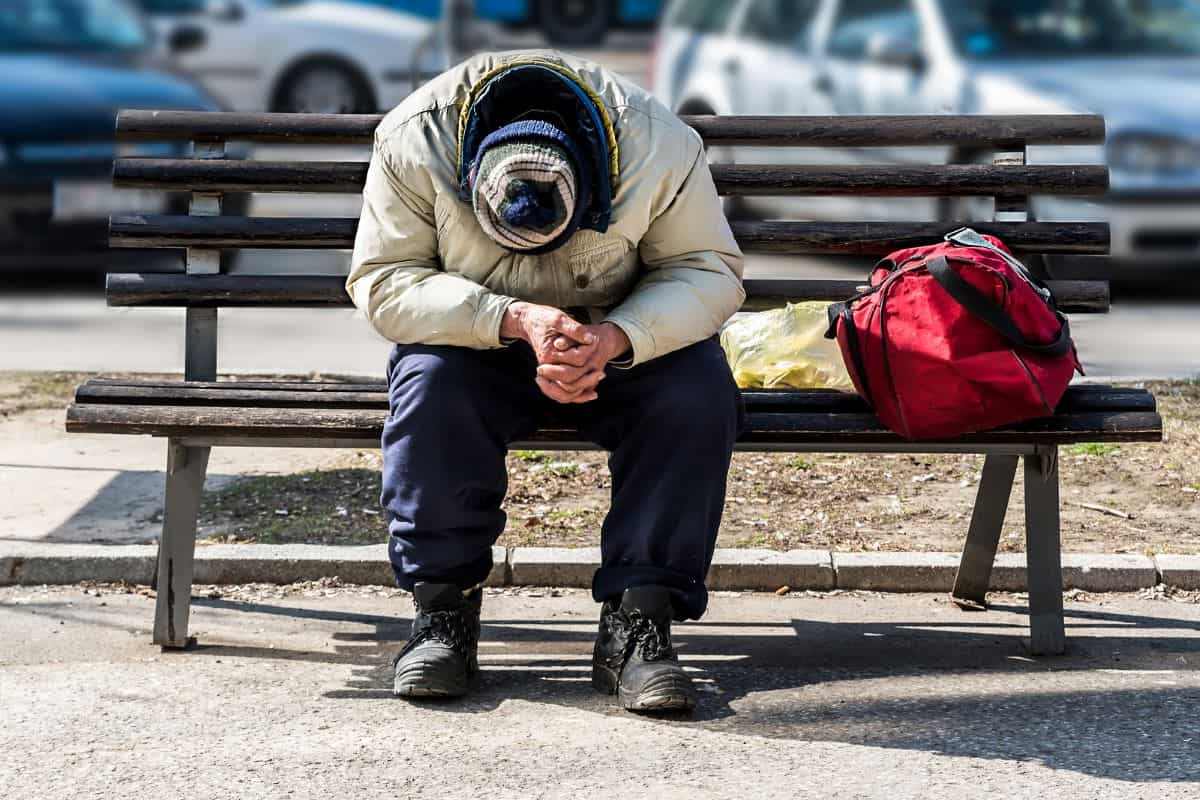
Does homelessness or addiction come first? Find out the connection between homelessness and addiction in California.
We live in a world that is quick to judge. Every day, we see people around us and immediately make snap decisions on their place in society and what type of personality attributes they possess. For example, when most people see a homeless person they immediately think, “drug addict” and turn the other way.
In most major cities, you see these individuals standing on the side of the road asking for donations or job opportunities, but the predominant perception is that they are deviants or addicted to some substance.
The truth is that a high percentage of homeless people do struggle with substance abuse, but addictions should be viewed as illnesses that require a great deal of treatment, counseling and support in order to successfully overcome.
Substance abuse is both a cause and a result of homelessness, often arising after people lose their housing or some other stabilizing factor in their lives. Understanding the prevalence of homelessness and how it interacts with substance addiction is essential to helping those living in destitution better their situation and address their addiction.
Homelessness in California by the Numbers
According to the U.S. Department of Housing and Urban Development, 151,278 individuals are currently homeless in California. That’s the highest number since at least 2007 and represents a 17 percent uptick since 2018.
It has become so bad that the United Nations recently compared the tent encampments in San Francisco to the slums of New Deli and Mexico City. Los Angeles’ Skid Row is now home to nearly 5,000 homeless people living within a half square mile, highlighting the ever-expanding issue.
While homelessness has been something that most in California have ignored due to its isolated locations, recent trends suggest that won’t be possible much longer. In recent years, homeless people have begun appearing in areas where they hadn’t typically been visible, causing the entire state to begin forming government funded initiatives to address the concern. (1)
How Does Addiction Impact Homelessness within California
Substance abuse is often a cause of homelessness due to the toll that substance addiction can have on a person’s life. In California, certain factors have impacted the surging numbers of homelessness, including:
- Substance Abuse
- Mental illness
- Physical Disabilities
- Cost of Living
Recent studies found that about 67 percent of the state’s homeless population had either a mental illness or a substance use disorder. Individually, substance addiction affects 46 percent of those living on the streets — more than three times the rate previously reported — and mental illness, including post-traumatic stress disorder, affects 51 percent of those living on the streets, according to the analysis.
And there’s more that’s impacting the homeless population. Statistics indicate that substance abuse negatively impacts up to 75 percent of the current unsheltered population.
These facts, and the rising number of people experiencing homelessness in California, directly identifies the overwhelming need to provide qualified substance addiction therapy to those looking to begin their recovery journey. (2)
Steps California is Taking to Help Those in Need
Los Angeles’ homeless initiatives, along with most initiatives across the state and the nation, emphasize what’s known as a “housing first” strategy. The primary focus is on getting chronically homeless individuals off the streets and into permanent housing, where they can access services to address their substance addiction and mental health issues.
While this is commendable, ignoring the underlying issues of addiction or mental illness is a recipe for failure. (3) This is why qualified treatment facilities capable of housing individuals while they receive comprehensive therapy and care is so important.
Substance addiction is both a cause and a result of homelessness, so addressing both issues simultaneously is the only way to achieve sustained success. Results suggest that stable housing during and after treatment greatly decreases the risk of relapse because of the emotional support and stability that a person feels when they are not worried about where they will sleep every night.
You Can Begin Again
Regardless of how you ended up homeless or if your addiction began before you were in a stable living environment or on the street, deciding to begin your recovery journey is the best decision you will ever make.
There is hope and help for individuals wanting something better out of life. Having the courage to seek assistance and admit that you need support to overcome your addiction is the first step toward a happier and healthier lifestyle.
Life-Changing, Holistic Co-Occurring Addiction Treatment at Ranch Creek Recovery
There’s no need to feel shame or embarrassment because of the disease you are struggling with. Instead, you should feel proud that you’ve faced your demons and found the strength and bravery to overcome them.
At Ranch Creek Recovery, we address addiction recovery and relapse prevention head on through our non-12-step, individualized, holistic addiction treatment programs. Our team of treatment experts will work one-on-one with you to create a custom treatment and recovery plan that will help you feel confident and ready to enter a new, sober life.
Learn about our addiction treatment programs or contact us today. We’re here to help in any way we can.
Resources:
1) U.S. Department of Housing. HOMELESSNESS TICKED UP IN 2019, DRIVEN BY MAJOR INCREASES IN CALIFORNIA. Accessed January 22, 2020. https://www.hud.gov/press/press_releases_media_advisories/HUD_No_19_177.
2) California Policy Lab. Predicting and Preventing Homelessness in Los Angeles. Accessed January 22, 2020. https://www.capolicylab.org/wp-content/uploads/2019/12/Predicting_and_Preventing_Homelessness_in_Los_Angeles.pdf.
3) The Los Angeles County Homeless Initiative. The Action Plan. Accessed January 22, 2020. https://homeless.lacounty.gov/the-action-plan/.













